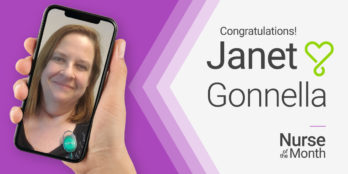
How to Choose a Virtual Health Vendor
 3 min
3 min
While telehealth is certainly not a new concept, the pandemic dramatically increased its use in skilled nursing facilities (SNFs). Telehealth enables better care outcomes by providing one-click access to critical clinical care after-hours or on holidays, ensuring residents get the treatment they need and offering nurses a much-needed second set of eyes. The care may be delivered virtually but the benefits are real.
The benefits of this care model can impact organizations clinically, financially and operationally. The results of a successful telehealth program include an increase in “treating in place,” fewer patient transfers to the ED and subsequent hospital readmissions and increased staff confidence. While many of these impacts may come to fruition gradually, patient outcomes will experience an immediate boost with the adoption of telehealth solutions.
However, the success of a telehealth solution is dependent upon staff actually using the product to its full potential. Certain solutions can be difficult to use, requiring multiple passwords and logins, manual oversight and less-than seamless integration with other systems.
Three Key Qualifications
So, how do you choose a virtual health vendor that will meet your needs? In comparing different solutions, make sure the following qualifications are met:
- Remote, secure and easy access: The solution should facilitate 24/7 access to qualified hospitalists who are well-versed in needs of the night-shift nurses and their patients. This easy access will ensure consistent treatment, care plan management and follow-up, improving patient care and staff productivity.
- Integration into existing workflows: Additionally, the solution should provide accessibility to shared patient records, diagnosis and treatment notes for reduced need of manual entry. Simplified access through a one-click button and integration into existing workflows will save providers time and resources. Further, reporting and claims integration reduces the need for manual oversight.
- Improves healthcare service costs: Finally, a virtual health solution should help stabilize occupancy as more patients are treated in-house. This will not only improve quality scores and the facility’s reputation, but it will also result in fewer penalties and reduced readmissions. Over time, this will increase referrals and opportunities for the facility to capture more revenue.
Unite & Empower an Extended Care Team
As the long-term and post-acute care (LTPAC) industry becomes increasingly complex with a heightened focus on value-based care, SNFs and senior living communities need access to 24/7 physician services to ensure optimal outcomes. By encouraging all clinicians to adopt telehealth solutions into their practice, an organization can anticipate improved patient access to care, more efficient use of time for nurses, patients and doctors, and enhanced provider-patient relationships.
PointClickCare’s Virtual Health solution unites and empowers all extended care team stakeholders. A fully integrated platform equipped with 24/7 monitoring, the solution ensures consistent treatment, care plan management and follow up.
Learn more about how Virtual Health can improve care outcomes at your organization
October 13, 2022






